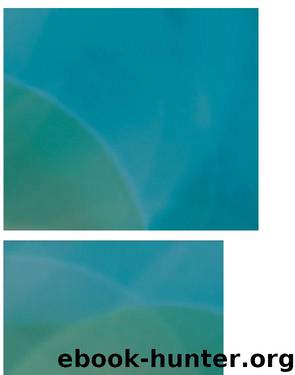3319257285 by Unknown

Author:Unknown
Language: eng
Format: epub
Published: 2015-10-05T09:37:36+00:00
120
5 Applications and Extensions
In recent years, refinements to Haken and Appel’s proof have been made, with
Robertson et al. (1997) showing that, through various acts of trickery, only 633
configurations need to be considered. (A short summary of this proof, together with
a description of a polynomial-time algorithm for 4-colouring planar graphs, can
be found at http://people.math.gatech.edu/ ∼ thomas/FC/fourcolor.html.) However, a
proof along more “traditional” lines still remains elusive and, to this day, the Four
Colour Theorem remains an excellent example, along with Fermat’s Last Theorem,
of a problem that is very easy to state, but exceptionally difficult to prove.
Readers interested in finding out more about the fascinating history of the Four
Colour Theorem are invited to consult the very accessible book Four Colors Suffice:
How the Map Problem Was Solved by Wilson (2003).
5.2 Edge Colouring
Another way in which graphs might be coloured is by assigning colours to their
edges, as opposed to their vertices or faces. This gives rise to the edge colouring
problem where we seek to colour all edges of a graph so that no pair of edges
sharing a common vertex (incident edges) have the same colour, and so that the
number of colours used is minimal. The edge colouring problem has applications in
scheduling round robin tournaments and also transferring files in computer networks
(de Werra, 1988; Coffman et al., 1985). The minimum number of colours needed to
edge colour a graph G is called the chromatic index, denoted by χ( G). This should
not be confused with the chromatic number χ( G), which is the minimum number
of colours needed to vertex colour a graph G.
As mentioned earlier, the edge colouring and vertex colouring problems are very
closely related because we are able to edge colour any graph by simply vertex
colouring its corresponding line graph.
Definition 5.3 Given a graph G, the line graph of G, denoted by L( G) , is con-
structed by using each edge in G as a vertex in L( G) , and then connecting pairs
of vertices in L( G) if and only if the corresponding edges in G share a common
vertex as an endpoint.
An example conversion between a graph G and its line graph L( G) is shown in
Figure 5.6(a). From this process, it is natural that the number of vertices and edges
in L( G) is related to the number of vertices and edges in G.
Theorem 5.9 Let G = ( V, E) be a graph with n vertices and m edges. Then its line
graph L( G) has m vertices and
1 ∑ deg( v)2 −m
2 v∈V
edges.
5.2 Edge Colouring
121
v1
v2
v
(a)
1,v2
v1,v2
v3
4
v
4
v
,v
2 ,v
,v
2 ,v
v 1
5
v 1
5
v
v
v
v
4
5
4,v5
4,v5
G
L(G)
v
v
1,v2
1
v2
(b)
4
v
v
,v
2 ,v
3
v 1
5
v4,v5
v
v
L(G)
4
5
G
Fig. 5.6 Illustration of (a) how to convert a graph G into its line graph L( G), and (b) how a vertex
k-colouring of L( G) corresponds to an edge k-colouring of G
Proof. Since each edge in G corresponds to a vertex in L( G) it is obvious that L( G) has m vertices. Now let {u, v} be an edge in G. This means that {u, v} is a vertex in
L( G) with degree deg( u) + deg( v) − 2. Hence the total number of
Download
This site does not store any files on its server. We only index and link to content provided by other sites. Please contact the content providers to delete copyright contents if any and email us, we'll remove relevant links or contents immediately.
Evelina by Fanny Burney(25947)
The Secret History by Donna Tartt(16642)
Who'd Have Thought by G Benson(15513)
Eleanor and Park by Rainbow Rowell(14470)
A Web of Lies 27 by Bella Forrest(13157)
All the Missing Girls by Megan Miranda(12760)
Fallen Heir by Erin Watt(12727)
The Cruel Prince (The Folk of the Air Book 1) by Holly Black(11338)
Shadow Children #03 - Among the Betrayed by Margaret Peterson Haddix(11134)
Twisted Palace by Erin Watt(10297)
Simon vs. the Homo Sapiens Agenda by Becky Albertalli(9646)
Warriors (9781101621189) by Young Tom(9631)
La Belle Sauvage by Philip Pullman(9183)
Caraval Series, Book 1 by Stephanie Garber(9059)
Six of Crows by Leigh Bardugo(8885)
P.S. I Still Love You by Jenny Han(8785)
They Both Die at the End by Adam Silvera(8617)
Fangirl by Rainbow Rowell(7838)
A Girl in a Million by Betty Neels(7787)
